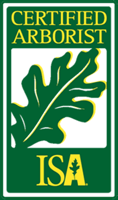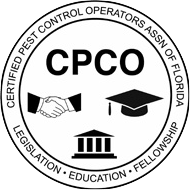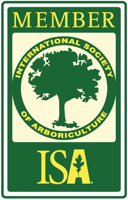Early Spring Pruning: A Step-by-Step Guide for South Florida Trees
Early spring in South Florida offers the perfect combination of mild temperatures and increasing daylight, making it one of the best times to give your trees a little extra care. Unlike many other regions, our subtropical climate doesn’t allow for a full dormant season, but the relatively cooler winter months still give trees a brief slowdown in growth. As spring arrives, fresh buds begin to appear, signaling the ideal moment for light, strategic pruning.
In this guide, we’ll walk you through why early spring pruning matters, how to approach it step by step, and the common mistakes to avoid. Whether you’re a homeowner with a few decorative palms or you manage a commercial property with sprawling oaks, these practical tips can help ensure your trees remain vibrant, storm-resilient, and safe all year.
Why Prune in Early Spring?
Encourage Healthy New Growth
As temperatures rise and daylight hours increase, trees in South Florida enter a phase of active growth. Pruning at this time can help direct the tree’s energy toward new, healthy shoots and branches. By removing dead or diseased limbs, you free up resources for more robust sections of the tree.
Manage Size and Shape
Many South Florida species—like live oaks, royal poincianas, and certain palm varieties—can grow rapidly, especially once the rainy season begins. Early spring pruning allows you to shape the canopy before it gets too dense, preventing overgrowth that leads to structural weaknesses.
Identify Issues Before Storm Season
High winds and heavy rains are frequent occurrences in our region. Spotting and removing potential hazards—such as weak branches or decaying wood—early can help prevent storm-related damage later in the year. Taking a proactive approach reduces the risk of costly emergency removals and property damage.
Less Stress on the Tree
Although South Florida’s trees don’t go fully dormant, they do experience a slight slowdown in growth during winter. Pruning in early spring, just before the flush of new growth, can minimize stress by allowing wounds to heal quickly as sap flow ramps up.
Step-by-Step Guide to Early Spring Pruning
1. Assess Tree Health and Structure
Before making a single cut, walk around your property and examine each tree carefully. Look for:
- Dead or Dying Limbs: Branches that are brittle, leafless, or show peeling bark.
- Crossing Branches: Limbs that rub or intersect, which can lead to wounds and decay.
- Pest Infestations: Holes, sawdust-like frass, or fungus conks that indicate internal decay.
- Structural Issues: Multiple main trunks (codominant stems), wide v-shaped branch angles, or cracks in the trunk.
Make a mental (or written) note of which limbs pose the highest risk or need the most attention.
2. Assemble the Right Tools
Using improper or dull tools can harm your trees and even jeopardize your safety. Invest in quality pruning equipment, including:
- Hand Pruners: For small branches up to about half an inch in diameter.
- Loppers: For branches up to about 1–2 inches in diameter.
- Pole Saw or Pruning Saw: For higher, thicker limbs that require a clean cut without crushing.
- Protective Gear: Gloves, safety glasses, and a sturdy ladder or harness if you’re working at height.
Pro Tip: Always sanitize your tools with a 10% bleach solution (or a specialized disinfectant) before and after pruning each tree, especially if you suspect disease or pests. This prevents cross-contamination.
3. Prioritize Safety and Stability
Begin pruning with a focus on safety. Remove limbs that threaten power lines, roofs, or walkways. If the tree is near a structure or any utility lines, consider contacting a professional arborist to handle high-risk cuts.
- Remove Deadwood: Dead or diseased branches can fall unexpectedly, especially during gusty winds.
- Eliminate Hazardous Limbs: Check for large limbs extending precariously over structures or leaning heavily to one side.
4. Make Proper Cuts
One of the most critical aspects of pruning is where and how you make the cut. A bad cut can lead to bark stripping, decay, or uncontrolled regrowth.
- Locate the Branch Collar: This is the slightly swollen area where the branch meets the trunk or a larger limb. Cutting just outside the collar helps the tree seal the wound naturally.
- Use the Three-Cut Method for Large Branches:
- Undercut a short distance from the branch collar to prevent tearing.
- Top Cut a bit farther out to remove the weight of the branch.
- Final Cut just outside the branch collar for a clean finish.
- Avoid Flush Cuts: Cutting flush against the trunk removes the branch collar and bark ridge, hindering the tree’s healing process.
5. Thin the Canopy for Airflow and Light
Thinning a tree’s canopy allows sunlight and fresh air to circulate, reducing the likelihood of fungal growth and pest infestations. Target crossing or overlapping branches, as well as any that grow inward or in odd directions.
- Aim for Balance: Too much thinning can stress the tree; remove no more than 20–25% of the foliage in a single pruning session.
- Even Distribution: If you remove limbs on one side, mirror the thinning on the opposite side to maintain symmetry and reduce stress on the trunk.
6. Clean Up and Mulch
After pruning, dispose of trimmed branches properly, especially if they show signs of disease or infestation. Bag or burn infected limbs to prevent spreading pathogens elsewhere on your property. Then, consider applying a layer of organic mulch (2–3 inches thick) around the base of the tree—taking care to leave a small gap around the trunk. This helps retain soil moisture, regulate temperature, and provide nutrients as the mulch breaks down.
Common Mistakes to Avoid
- Topping the Tree: Cutting off the top of a tree in an attempt to reduce its height can lead to weak, rapid regrowth and potential structural failure.
- Over-Pruning: Removing too many branches at once can stress the tree, leaving it vulnerable to disease and insect attacks.
- Using Non-Sterilized Tools: Dirty tools can spread disease from one tree to another.
- Ignoring Root Issues: While pruning focuses on branches and canopy, don’t neglect the tree’s foundation. Compacted soil, poor drainage, or exposed roots might require professional attention.
Species-Specific Notes
- Palm Trees: Over-pruning palms can lead to nutrient deficiencies and a weakened trunk. Remove only completely brown fronds, and avoid cutting healthy green ones.
- Flowering Trees: Some species, like tabebuia or jacaranda, should be pruned after their blooming cycle to preserve blossoms.
- Fruit Trees: Light pruning in early spring can encourage fruit production, but be mindful not to remove too many fruit-bearing branches.
The Value of Professional Help
While do-it-yourself pruning can work for small limbs or easily accessible branches, certain scenarios call for professional arborists:
- Large, High-Risk Trees: Trees close to power lines or buildings often require specialized equipment and expertise.
- Disease Diagnosis: An arborist can identify signs of fungal infections, pest damage, or nutrient deficiencies that might not be obvious to the untrained eye.
- Permits and Regulations: Some South Florida municipalities have strict ordinances protecting particular tree species. A professional can ensure compliance with local regulations.
Conclusion
Early spring pruning is an excellent investment in the long-term health and appearance of your South Florida trees. By taking a proactive, careful approach to removing deadwood, shaping the canopy, and addressing structural concerns, you help your trees withstand the challenges of storms, pests, and rapid seasonal growth. Remember to prioritize safety, use the right tools, and make clean cuts that preserve the branch collar.
If you’re unsure about performing these tasks on your own—or you have large or diseased trees that require specialized attention—reach out to a professional. A certified arborist can provide a thorough inspection, recommend tailored pruning strategies, and ensure you’re compliant with local rules.
Ready for expert guidance?
Contact Zimmerman Tree Service to schedule a spring tree assessment. Our certified arborists will help you prune for beauty, safety, and resilience—so you can enjoy the vibrant growth and natural charm of South Florida’s trees all year long.





